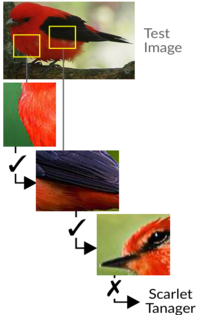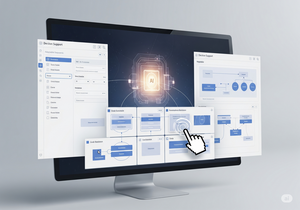Offered Projects for Winter Semester 25/26
- Rethinking Reviews: The Power and Pitfalls of LLMs in Systematic Literature Reviews
- From Rhythm to Research: A Design Science Project to Detect Flow States in Musicians
- Developing an App to Optimize Learning Strategies for Students
- ProtoXAI - Can AI tell advertisements apart and how?
- From Pixels to Physiology: Real-Time Algorithm Development for Telemedical Applications
- Mastering Video Gaming with Machine Learning and Flow Detection
- Dig deep, drill down - Interactive Exploration of AI Explanations
- ConTextual Doctor - LLM Fine-tuning on Medical Explanations
- ConfigurAItor – How do you like your explanations?
Rethinking Reviews: The Power and Pitfalls of LLMs in Systematic Literature Reviews

The objective of this Bachelor/Master project is to explore the potential and challenges of using large language models (LLMs) in the systematic literature review (SLR) process. Currently, LLMs are employed to facilitate the SLR process; however, there is a lack of a systematic approach to identify potential sources of error. This project addresses this issue by comparing the results of SLRs performed by humans and with the aid of LLM tools.
Learn more about this student project and how to apply:
Rethinking Reviews: The Power and Pitfalls of LLMs in Systematic Literature Reviews
Contact Person: Cosima v. Uechtritz

From Rhythm to Research: A Design Science Project to Detect Flow States in Musicians
Musicians describe the flow state as a desirable state of optimal experience and enhanced performance. Similar to the tracking of sports activities and habits, a flow-state detection system could improve progress tracking and overall performance of musicians. The objective of this Bachelor/Master project is to lay the foundation for a flow-state detection system in musicians.
Learn more about this student project and how to apply:
From Rhythm to Research: A Design Science Project to Detect Flow States in Musicians
Contact Person: Cosima v. Uechtritz
Developing an App to Optimize Learning Strategies for Students

Technologies that suggest personalized learning strategies, based on users’ flow states and context-related information (e.g., time of the day or study location), have the potential to reduce students’ mental workload and improve performance. The objective of this specific Bachelor/Master project is to lay the foundation for such a system. This includes identifying the app's requirements and functionalities, designing its architecture, and first implementations of selected features.
Learn more about this student project and how to apply:
Developing an App to Optimize Learning Strategies for Students
Contact Person: Cosima v. Uechtritz

ProtoXAI - Can AI tell advertisements apart and how?
The objective of this project for Bachelor or Master students is to lay the foundation for a deep learning based decision support system utilizing explainable artificial intelligence methods like prototype-based approaches. So far, prototype-based methods have mostly been used on data sets with clearly distinguishable objects like birds and cars. However, there are images in advertising data sets - such as those produced by Hussain et al. (2017) - that are more diverse and represent more abstract concepts, making classification and explanation efforts both more difficult and more insightful. In this project, students have the opportunity to cooperate closely with the chair team, pursue individual solutions, and apply explainable machine learning techniques.
Learn more about this student project and how to apply:
ProtoXAI - Can AI tell advertisements apart and how?
Contact Person: Luca Gemballa
From Pixels to Physiology: Real-Time Algorithm Development for Telemedical Applications

Due to the decreasing number of hospitals in Germany, the need for telemedical solutions is growing to ensure comprehensive healthcare coverage. Among different approaches, remote measurement of vital signs, such as heart rate and oxygen saturation, via remote photoplethysmography (rPPG) algorithms is emerging as a promising solution. The objective of this Bachelor/Master project is to lay the foundation for a real-time rPPG algorithm using machine learning methods such as face detection and region of interest selection.
Learn more about this student project and how to apply:
From Pixels to Physiology: Real-Time Algorithm Development for Telemedical Applications
Contact Person: Cosima v. Uechtritz
Mastering Video Gaming with Machine Learning and Flow Detection

Many gamers report experiencing a state of complete immersion during gameplay, accompanied by a loss of track of time. This state of optimal experience, also known as flow state, is closely related to peak performance. This flow state is of particular interest to game designers, who seek to evoke it in order to maximize player engagement, to players looking to enhance their performance, and to economic stakeholders in professional esports, who profit from that improved performance.
Thus, the objective of this specific Bachelor/Master project is to classify flow states based on physiological data gathered during gaming using machine learning algorithms. To achieve this, students will use the open-source BIRAFEE dataset. This dataset contains data points from 103 participants playing three different jump-and-run games.
Learn more about this student project and how to apply:
Mastering Video Gaming with Machine Learning and Flow Detection
Contact Person: Cosima v. Uechtritz
Dig deep, drill down - Interactive Exploration of AI Explanations

Most explainable artificial intelligence methods provide explanations that are static and, therefore, do not conform to how humans usually convey explanations, namely in an interactive and social manner. Making explanations interactive in the context of artificial intelligence is intended to bridge this gap and provide explanations that ideally support users' understanding.
The objective of this Bachelor/Master project is to develop an interactive user interface that implements the different layers of Bertrand et al.’s (2023) taxonomy and allows operators to disable specific types of interactivity. Students will implement a deep learning model for the Secondary Mushroom dataset (Wagner et al., 2021). This dataset contains 61,068 instances of mushrooms, described by 20 features such as cap diameter, stem height, and season.
Learn more about this student project and how to apply:
Dig deep, drill down -Interactive Exploration of AI Explanations
Contact Person: Luca Gemballa
ConTextual Doctor - LLM Fine-tuning on Medical Explanations

Many explainable artificial intelligence (XAI) methods rely on visual representations to convey their information. With the recent advances of large language models (LLM), however, textual explanations have become more feasible than ever before. A combination of both types of explanations promises to increase user understanding more than either alone.
The objective of this Bachelor/Master project is to fine-tune a multimodal LLM (M-LLM) that allows users to ask questions about the plots visualizing a variety of XAI outputs, as well as about further medical information and the training data used for the underlying AI model. To achieve this, the participating students will fine-tune an M-LLM to provide explanations on these aspects. The fine-tuning dataset will be curated at the start of this project and contain plots visualizing a variety of XAI outputs as well as text describing them, derived from papers doing diagnosis, prognosis, treatment effect prediction, or any other medical task.
Learn more about this student project and how to apply:
ConTextual Doctor - LLM Fine-tuning on Medical Explanations
Contact Person: Luca Gemballa
ConfigurAItor – How do you like your explanations?

Explanations work differently for each and every person. Some people respond better to visual cues, while others prefer textual explanations, and still others like working with tabular information. Being able to configure your own explanations promises to be beneficial in promoting understanding of artificial intelligence and its application in practice.
The objective of this Bachelor/Master project is to develop an adaptable user interface and to implement a selection of explanation methods that can be dynamically integrated into the user interface. The adaptable user interface should facilitate the modification of its displayed content with minimal effort and in a modular fashion, be compatible with various DL models, and possess future adaptive capabilities.
Learn more about this student project and how to apply:
ConfigurAItor – How do you like your explanations?
Contact Person: Luca Gemballa
